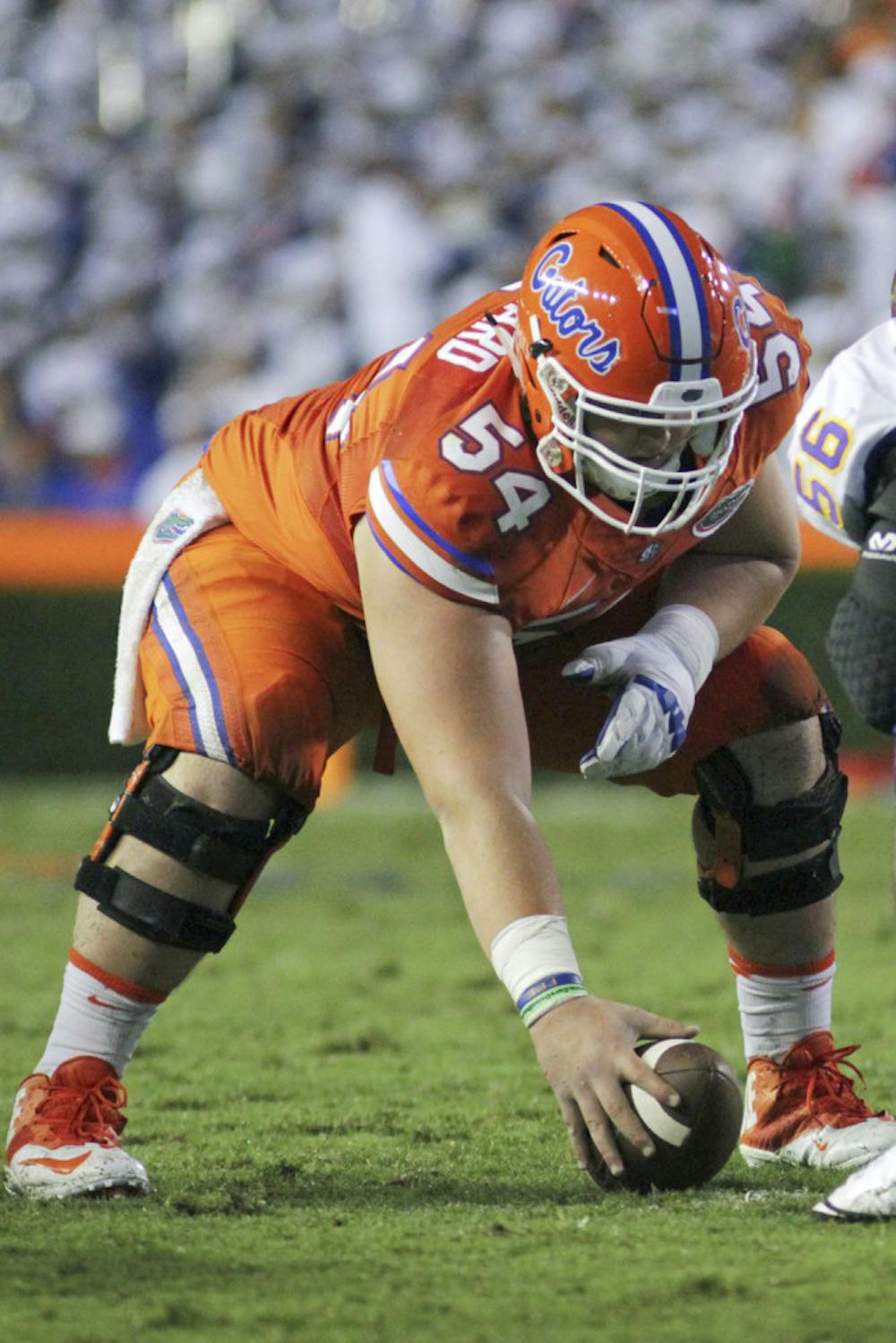Florida is off to a 3-0 start this year and while there is some optimism around the program, there’s one glaring weakness that stands out above the rest: The play of the offensive line.
There were many questions entering the season concerning how much depth the line had and how it would shape up.
And through three games, those questions are starting to be answered and they confirm the team’s worst fears.
The Gators’ offensive line has been the worst unit on the team.
The line the coaching staff is putting out on the field right now consists of a rotation that had five players — Mason Halter, Martez Ivey, Fred Johnson, Tyler Jordan and Travaris Dorsey — make their debut in Southeastern Conference play against Kentucky on Saturday.
Combine those five with David Sharpe, Trip Thurman, Cam Dillard and Antonio Riles — a converted defensive lineman — the line has underwhelmed so far.
Florida’s offensive line is not good enough for UF to win games as it starts to get into the heart of its schedule.
It was bullied in the second half as it struggled against the Wildcats to protect quarterback Will Grier and open up holes for the running backs.
The line will go up against some of the best defensive lineman in the SEC in the next couple of games and head coach Jim McElwain is aware of the challenges those defensive fronts present.
"We’re going to start to play some real D-linemen – glass-eaters and fire-breathers," McElwain said.
"You’re going to have to get off the ball, play with pad level and get your second step in the ground snap your hips."
The line is having trouble getting into their second step, especially in the running game. It's supposed to create holes for the running backs to run through, but Florida’s line isn’t creating lanes consistently.
The running game is averaging 170 yards per game which ranks 81st nationally. And it gets worst for the Gators if you take into account how frequently quarterbacks Will Grier and Treon Harris scrambled in those games.
If you take out the quarterbacks — Grier, Harris and Josh Grady’s two runs against New Mexico State — along with wide receivers Brandon Powell and Antonio Callaway, the running backs are averaging 4.03 yards per carry and 107.3 yards per game.
That’s not good enough to win games in the SEC, and most of that poor production can be placed on the shoulders of the offensive line because they are struggling to create holes for the backs.
Kelvin Taylor, UF’s leading rusher, has just 154 yards on 40 carries through three games and the line can’t expect the running backs to run east and west against SEC-caliber defenses.
They need to create creases for the backs to run north and south so they can get up the field quickly.
The interior of the offensive line has struggled mightily as Thurman, Dillard and Riles have been wildly inconsistent. Offensive line coach Mike Summers has seen how much they’ve struggled, but he isn’t ready to make wholesale changes.
"I would be more leaning toward trying to solidify the inside. What we have to do to get that done, we’ll continue to do," Summers said. "But this position is not like wide receiver. You can’t just throw five new guys out there every series and expect it to get better."
If the Gators don’t make changes to the offensive line, then they will have no shot down the stretch.
The line needs to step up, and if it doesn’t the running game will continue to be nonexistent.
Whoever is taking snaps at quarterback will be running for his life the line doesn't provide better protection.
Follow Luis Torres on Twitter @LFTorresIII
UF offensive lineman Cam Dillard prepares to snap the football during Florida's 31-24 win against East Carolina on Sept. 12, 2015, at Ben Hill Griffin Stadium.






